Our first Italy post was about six weeks ago when we wrote about our entry into Napoli and our time there. Travel was rapid after that, with our path taking us to Sorrento, Rome, Florence, Pisa, Venice, and Verona. We visited a lot of sights filled with lots of people. The whole world was in Italy in October! We visited Pompeii, THE Colosseum and everything Roman, St. Peter’s Cathedral, the Duomo, the iconic waterways of Venice, the leaning tower, etc. (But not Juliet’s fictional house and or empty tomb–obviously–but we will discuss that ridiculousness in another post.) It was not realistic to think we could keep caught up on the blog. We’ll share some snapshots of those places on the “you must visit” list everyone knows about soon.
However, what we really hope to do here on our blog is continue to highlight natural wonders unique to the places we’re visiting. After three weeks of a fast pace, we a bad case of big-city fatigue and found ourselves in the unusual position of experiencing our second Fall within the same year. The Fall color we experienced in Ushuaia, Argentina, was just amazing. As we started planning our final couple of weeks in Italy, we were hoping we could find a similar experience. Our searches for “best fall color in Italy” kept turning up Dolomites and the gateway to the Dolomites, Bolzano, Italy.
Our destination was set. We’d head into the Italian alps and hope we weren’t too late to see the change of seasons. We planned ten days of exploration in the Italian Alps, of which Bolzano is just the beginning. It provided a taste of the Dolomites and the character of the region.
What are Dolomites?
For a quick primer, we are talking dolomite, a rock formation deciphered and described by a geologist of the same name. These are sharp, jagged peaks dotting the Italian Alps but making up only a small portion of the actual mountain landscape in select areas. Explorers found ocean fossils at the highest points of these stark, vegetation-free peaks and set about trying to figure out how they could have possibly gotten there. Turns out these mountains were actually once ocean beds teaming with life. Over time, continental collisions forced them upward. This was definitely one of those times when we wanted to visit a medium and talk to Ande’s father Dean’s ghost about the science behind it all. Regardless of the science, they are a unique spectacle found only in the italian Alps.
Bolzano (a.k.a. Bozen) Town
Bolzano is an interesting place and reveals something about Italy that we didn’t expect. We found ourselves in an Italian city where the residents were speaking German and waiters in some restaurants were wearing lederhosen. Signs were in German, names of businesses were German, and the food and beer was definitely German.
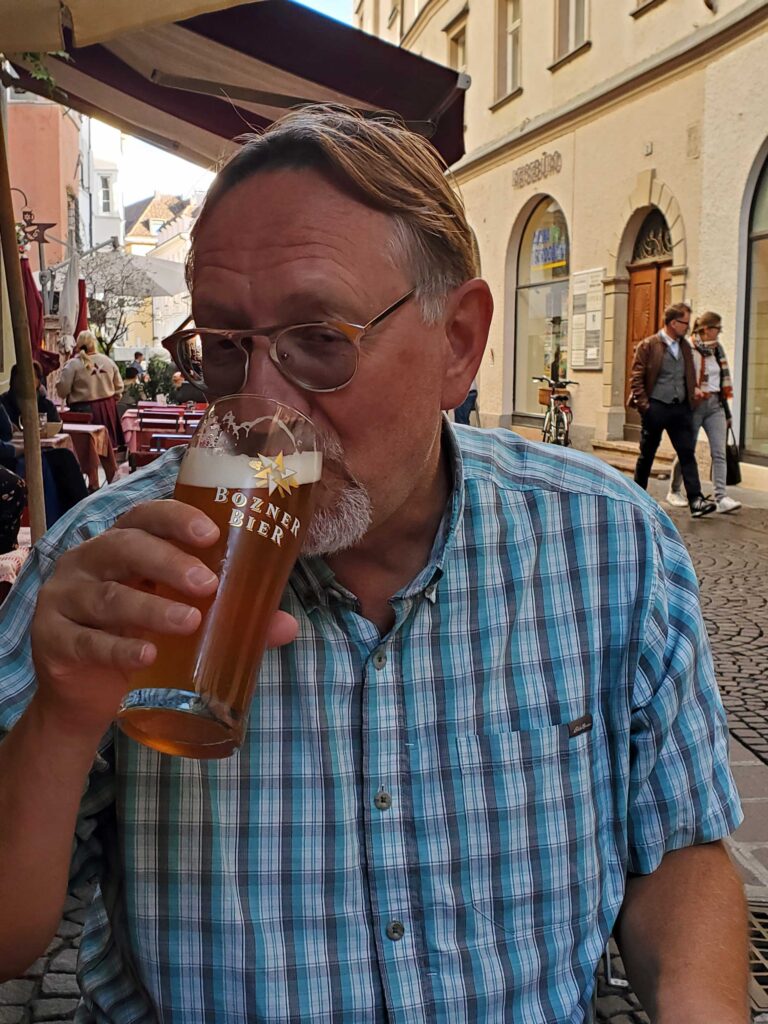
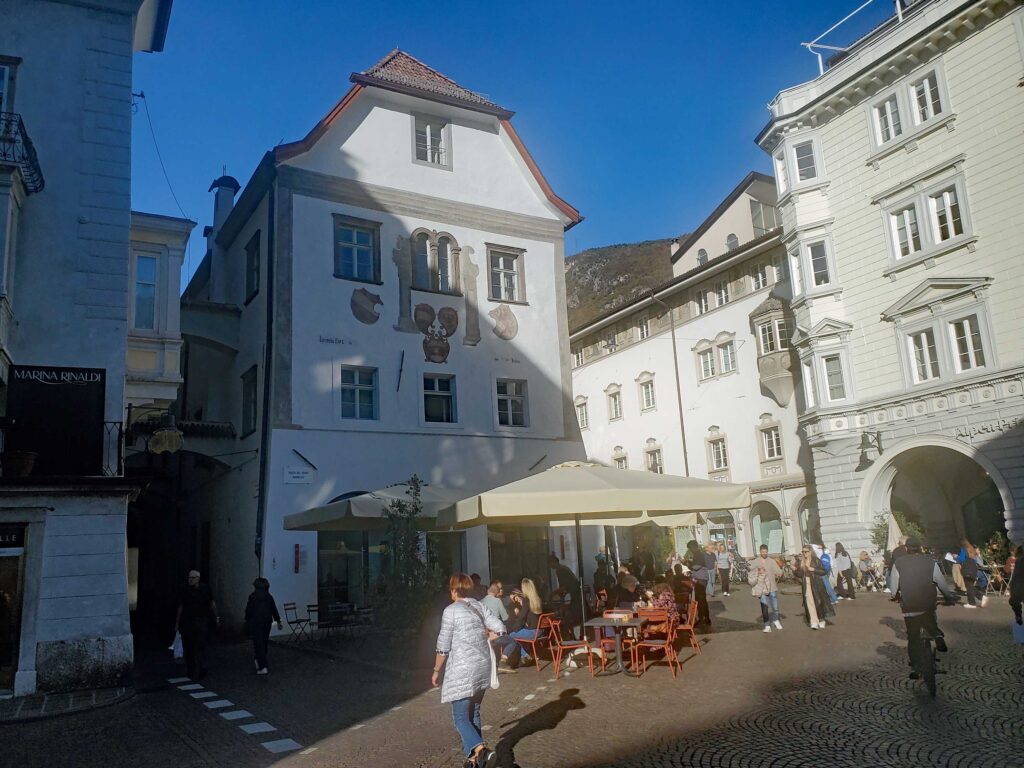
To make it more confusing, this region is clearly part of Italy and they consider themselves Italian. To try and sort it out in your head, you can read a little about the Autonomous Regions of Italy, but it still doesn’t fully explain the contradictions. These Austrian regions were ceded to Italy at the end of WWI, creating the unique region called Trentino/South Tyrol. You’ll find just that mix, a unique combination of Italy and Austria in one area that is just fun. To be overly stereotypical, it was pasta for dinner one night and wurst and kraut the next. The architectural style of the town is what you would expect from a Tyrolean or Austrian region.
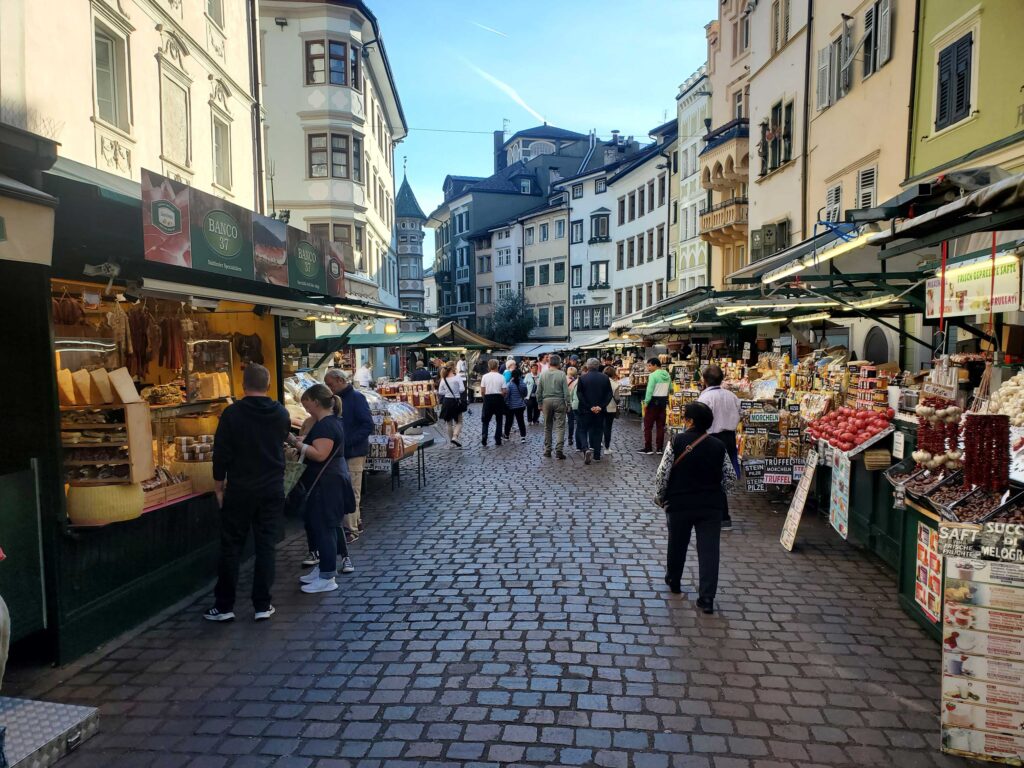
As charming as the city’s architecture is in the interior, it is also framed by the lush green hillsides and spectacular sights such as parks, castles, and vineyards surrounding its core. We took a short walk from the main square in town across a bridge into the local park where we took these amazing pictures. We were pleased to see the leaves of the vinyards turning yellow and glimpses of color on the mountains in the distance. Our timing might be good.


Oberbozen
The scenery surrounding the town is just the appetizer for what you’ll discover using Bolzano as a base. Bolzano literally is the gateway to the Dolomites in that there is a cable car station just a short walk from the train station that takes you high up into the mountains to Oberbozen. The cool thing about this is that it is considered part of the public transportation and not a tourist attraction. The cable car along with the train we talk about in the next paragraph is all covered by the public bus pass. All of the little villages in the mountains above town are basically just suburbs. You can get from remote mountain valleys into the city for work on public transportation in about half an hour. This is truly the dream commute!
The ride up the mountain in the cable car provides great views and photo opportunities. Here’s a little of what we enjoyed from the gondola. The jagged peaks in the distance were our first glimpse of the dolomite peaks just behind the green hills.
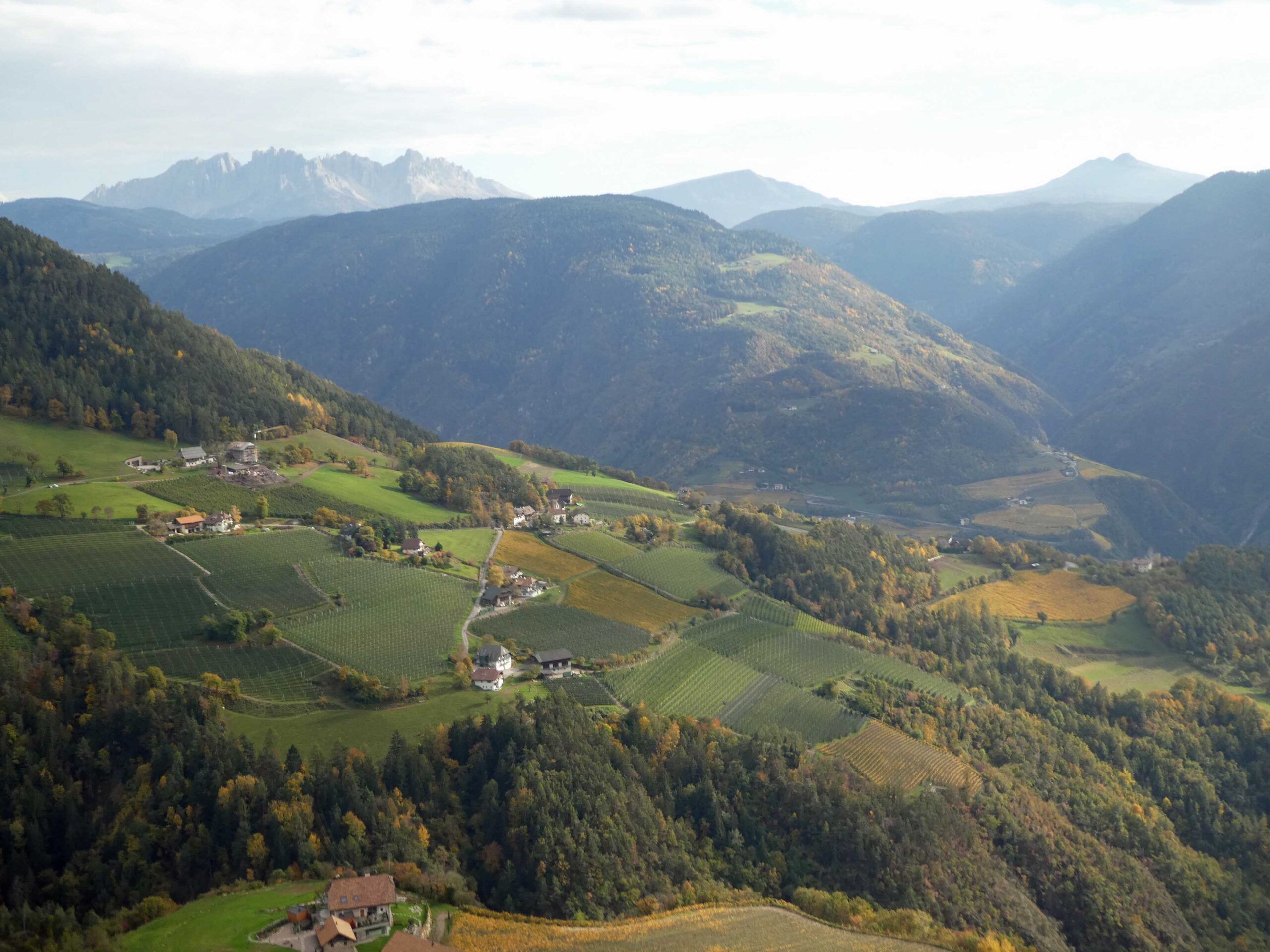

Oberbozen has the feel of a ski resort town and has spa and hotel amenities. Aside from the views on the way up, there’s not much there to see. The main attraction at the top for us was the narrow-gauge train that takes you to the village of Klobenstein and other small surrounding hamlets.
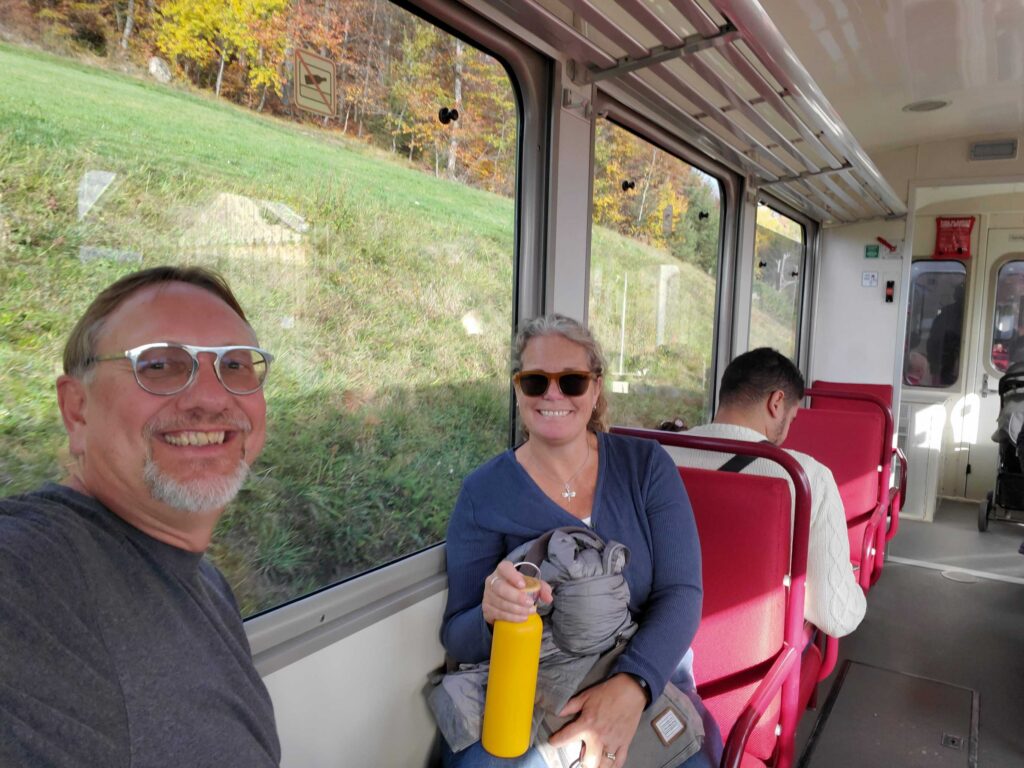
Of course, the train ride provides more scenery and opportunity to enjoy the color changes of Autumn.
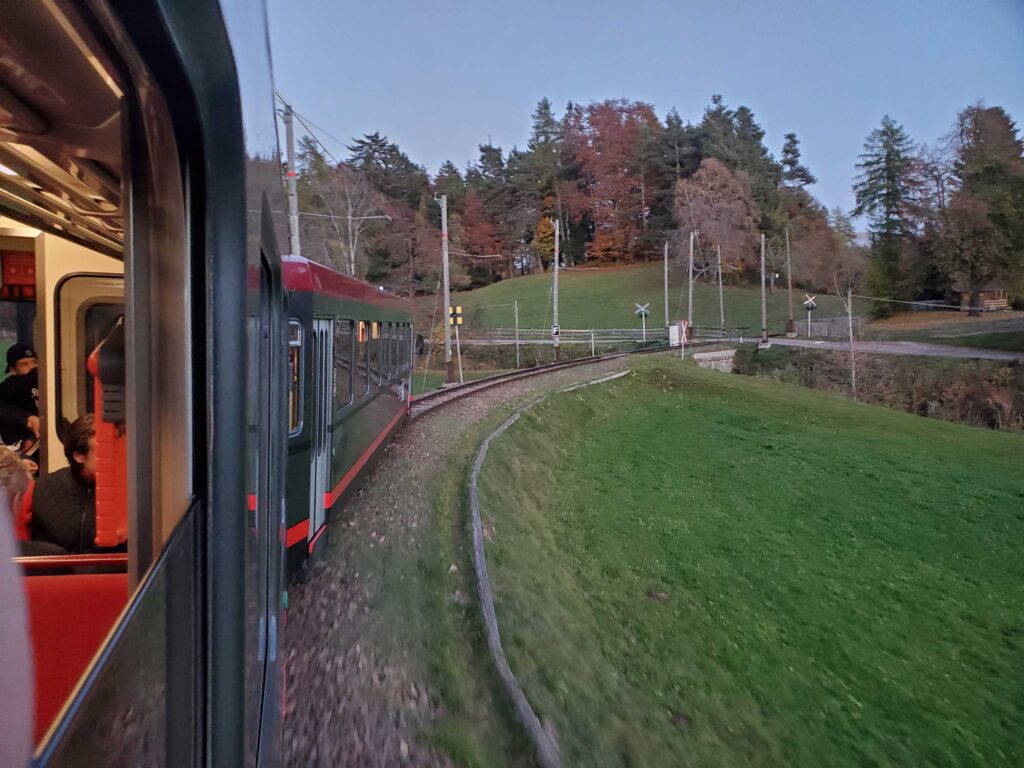
While the train ride and the scenery are enough of a reward in of themselves, the village of Klobenstein is also home to another natural wonder that only forms in certain parts of the world. Centuries of erosion have created tall pinnacles, some topped precariously balanced rocks, referred to by the locals as Earth Pyramids. Having seen similar formations in Turkey and Utah, we took the walk from the train station to get a view of this interesting sight.
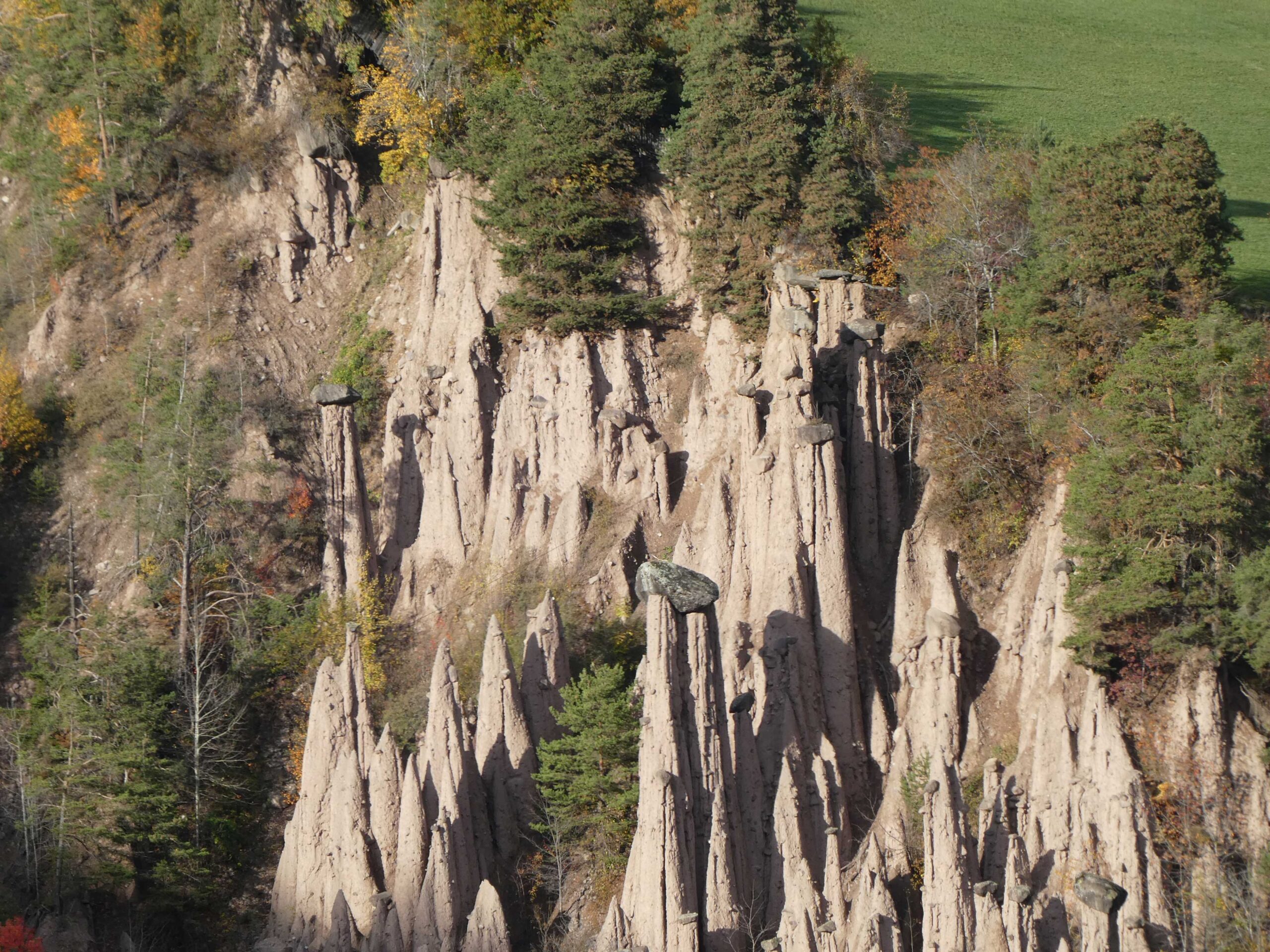
Of course, the area was also surrounded by the change of seasons in full color.
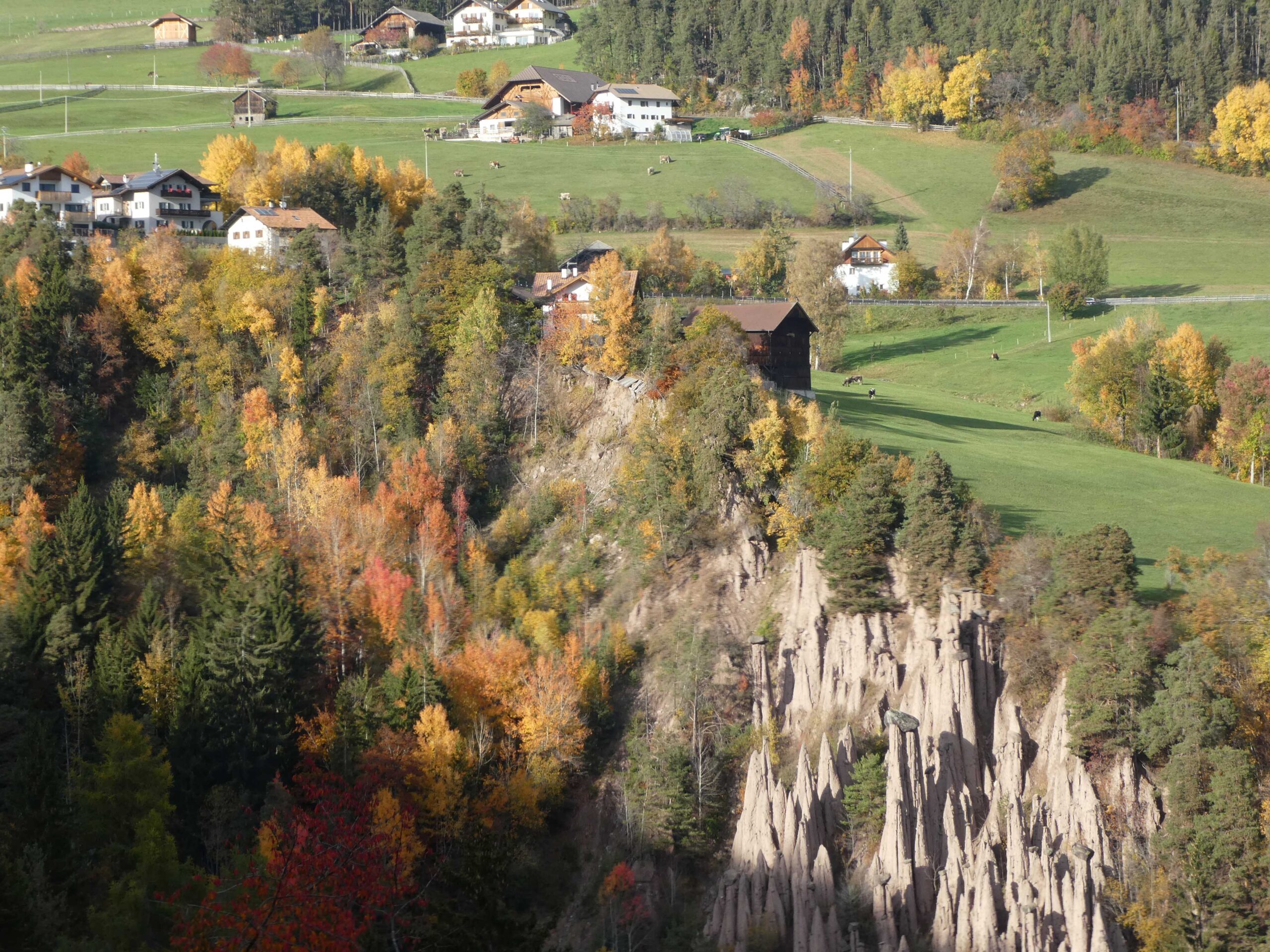
Ötzi the Iceman
The natural scenery isn’t actually the Bolzano area’s main claim to fame. In many scientific circles, Bolzano is better known as the home of Ötzi the Iceman. Ötzi was discovered in thawing ice in the early 1990s and was eventually determined to be more than 5,300 years old. Ötzi and his belongings were basically freeze dried, preserving not only Ötzi, but also fragile plant and textile items such as his coat, boots, pouches, and tools that would have otherwise decayed and disappeared. An entire museum is dedicated to Ötzi in Bolzano, which also includes a full-sized replica of what scientists imagine Ötzi may have looked like.
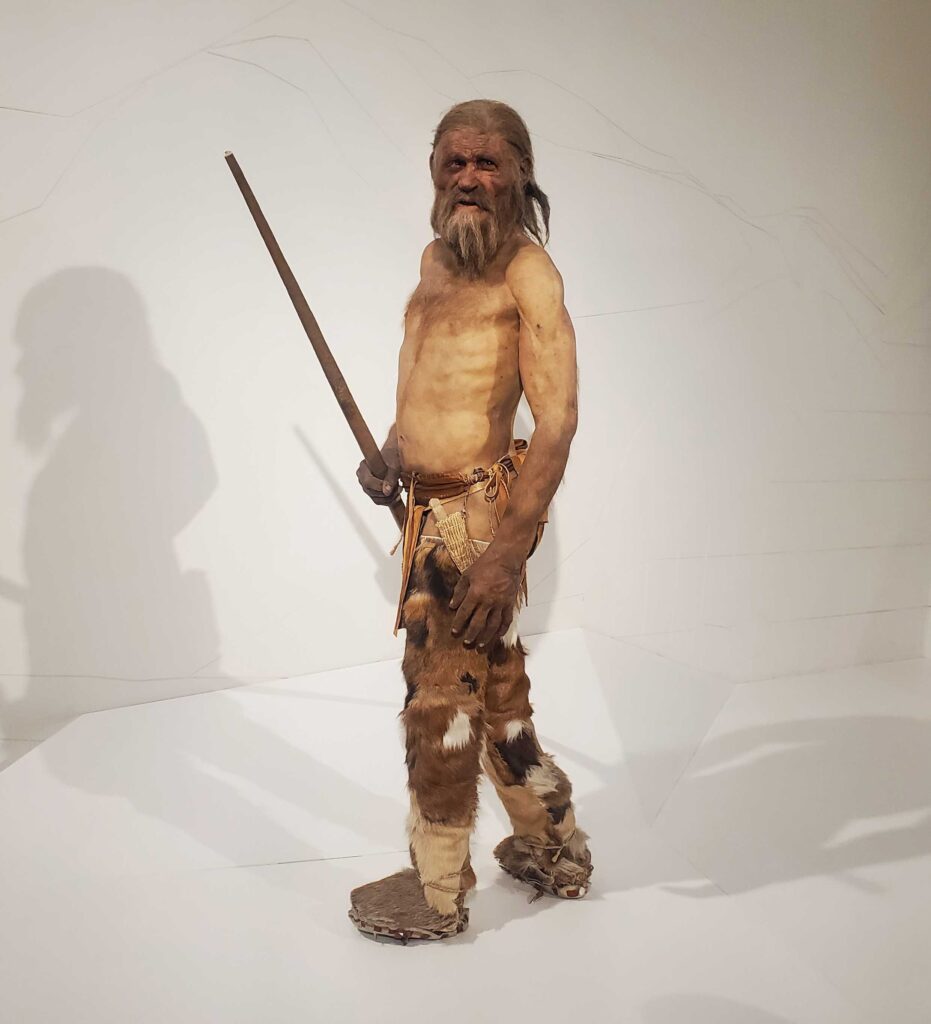
So, we got a little off subject with Ötzi the Iceman, but you really can’t mention or visit Bolzano without mentioning Ötzi. No other complete record of life during that period exists to this extent.
We chose Bolzano as our entry point into the Italian Alps hoping to experience the change of seasons and view the extraordinary dolomite rock formations. We felt lucky that the leaves were just changing color and our timing might be good. The cable car ride above Bolzano provided a taste of what the Dolomites had to offer, but we needed to get much closer. We rented a car and put together a week-long tour further into the Italian Alps. More to come!
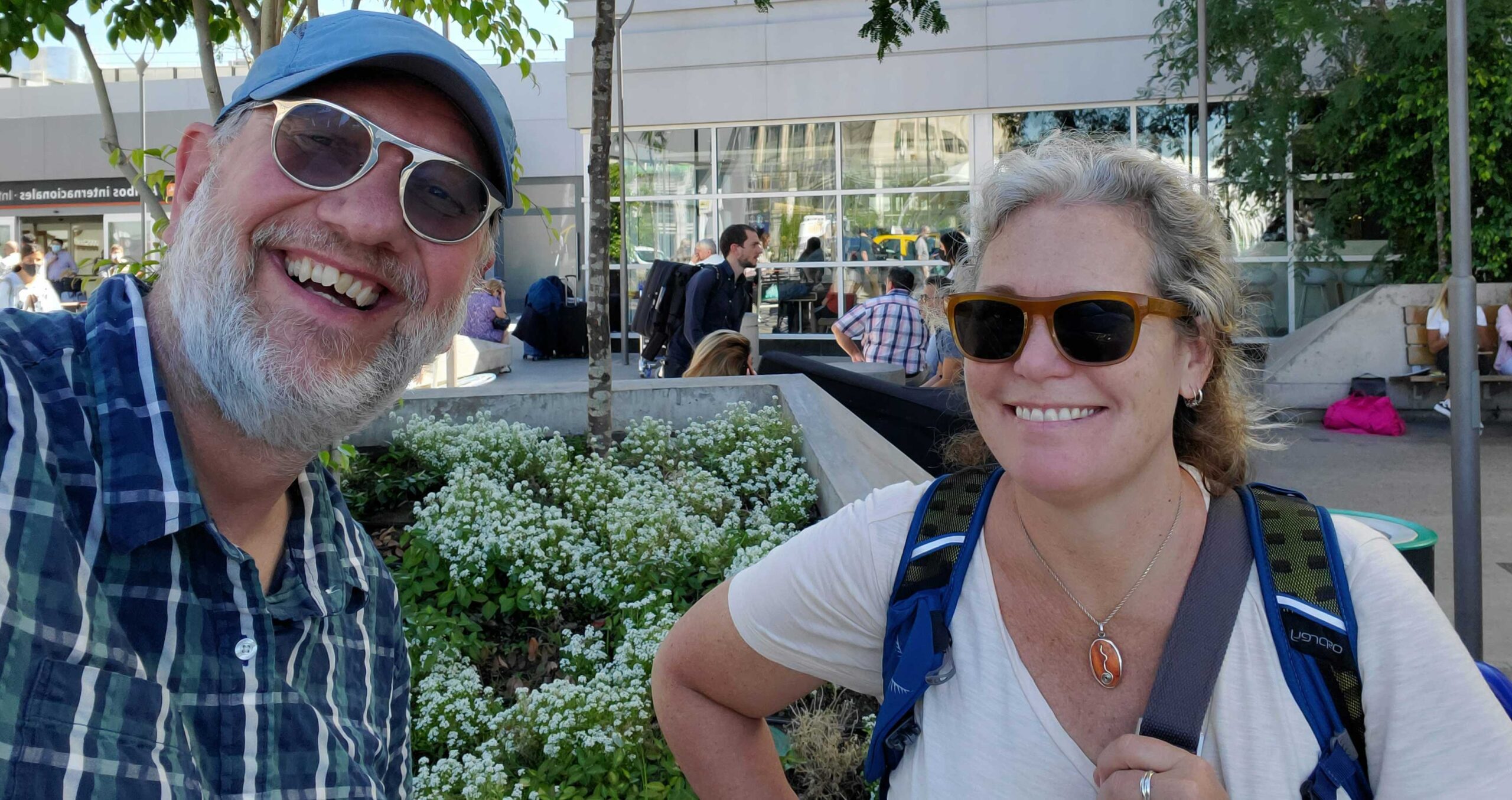
Such a cool mix of cultures in a gorgeous and geographically unique area!
I thought you meant Dolemite, the blaxpoitation film from 1975. Actually a pretty decent movie is you ask me…